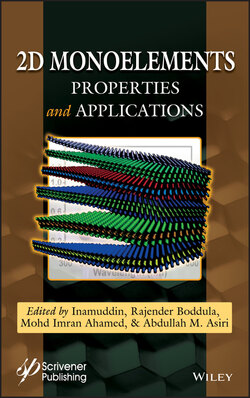Читать книгу 2D Monoelements - Группа авторов - Страница 44
2.2 Fundamental Characteristics 2.2.1 Structure
ОглавлениеBy means of density functional theory (DFT) calculations, one can see that honeycomb-structure antimonene monolayers are composed of different allotropic forms, which are shown in Figure 2.1a [11]. In these allotropes, the theoretically and experimentally studied antimonene structures are α and β phases. β-antimonene with a buckled structure is the lowest-energy configuration, while α-antimonene has a puckered structure (Figure 2.1b). From the calculated phonon spectra of these two phases, it is observed that there are no appreciable imaginary phonon modes, indicating that both α- and β-phase antimonene structures are thermodynamically stable (Figure 2.1c). Furthermore, each Sb atom is bonded with three adjacent Sb atoms in one atomic layer, endowing them with octet stability [8]. The buckled honeycomb structure of β-antimonene stabilizes further the layered structure, which turns β phase to be the most stable structure. Due to the weak interlayer interactions, α- and β-antimonene monolayers can be easily exfoliated from their bulk crystals.
Figure 2.1 (a) Top views of the relaxed antimonene monolayer allotropic forms with five typical honeycomb structures (α, β, γ, δ, ε). (b) Calculated average binding energies of antimonene allotropes with different phases (α, β, γ, δ, ε, ζ, η, θ, ι). (c) Phonon band dispersions of α and β phases of antimonene monolayer. Reproduced with permission [11]. Copyright 2016, Wiley-VCH.
